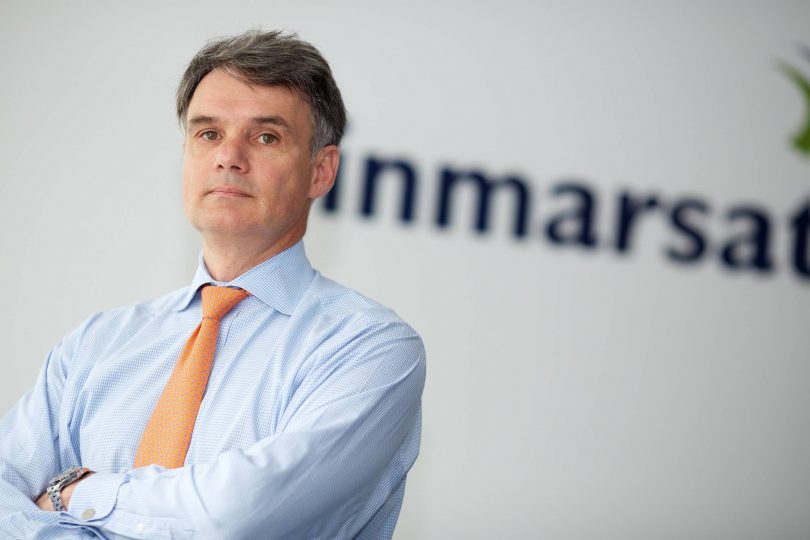Latam Satelital spoke with Michele Franci, CTO of Inmarsat. Evolution of the different generations of constellations, diversification in the hiring of manufacturers, the future Inmarsat-6 and the European Aviation Network some of the main topics addressed.
Español | English
The Inmarsat-2’s, launched into space between 1990 and 1992, were designed to operate for 10 years, nevertheless, they stayed in service until December 2014. What factors made this extension of operational life possible? What impact did extending the lives of these satellites have on Inmarsat’s operations?
The Inmarsat-2 fleet, like Inmarsat’s third and fourth generation constellations, carry L-band payloads. It is a physical characteristic of the L-band spectrum that there is a significant degree of pointing tolerance. While other bands, such as Ka and Ku, require the maintenance of a precise position in geostationary orbit, the flexibility afford by L-band means that Inmarsat can allow its satellites to travel North and South of the equatorial orbit without impacting the service users receive on Earth. Because of this, Inmarsat is able to expend less fuel in maintaining an exact position, which enables the satellite to operate beyond the standard 15 year life estimated by the manufacturer; and our flight engineers have had many decades of experience, meaning that we are now very skilled at this.
However, we do not plan our business strategy on being able to achieve this extension of life, as other factors come into play, such as the performance of the various components on the satellite. It is simply an added benefit of our skill at efficiently flying our satellites.
It is important to point out, however, that this ability exists in the L-band. For our Ka-band satellites, where pointing tolerance is less flexible, we need to expend fuel to keep the spacecraft in a precise position. As a result, we do not expect to be able to fly our Inmarsat-5 satellites for such a long time beyond their design life. Once the fuel is exhausted, then the satellite’s working life is over.
How would you briefly describe the evolution of the different generations that make up Inmarsat
From our second generation fleet (Inmarsat-2) to our fourth generation (Inmarsat-4), we have been able to follow a similar formula. This is that just one satellite from the succeeding generation has the same capacity as the entire fleet of preceding generation.
Our fifth generation, Global Xpress constellation, operates on a different spectrum and is the first satellites we have launched that have a Ka-band payload. Therefore, we cannot compare it in the same manner with the fourth generation fleet, which has an L-band payload.
For our sixth generation, which is currently under construction with Airbus, we have not looked to follow this increase in capacity formula. This is because for the Inmarsat-6 fleet, we have focused on flexibility rather than just raw power. So, comparing the L-band payload on each Inmarsat-6, we see that one I-6 has more beams available than the entire I-4 fleet.
It’s important to note that the I-6 fleet is unique in another way. This is the first dual-payload constellation that Inmarsat has ever created. Each satellite will feature both L-band and Ka-band payloads.
In this regard, we benefit from some particular efficiencies with our I-6 fleet. Combining two payloads on to one platform creates savings in terms of the common costs; specifically the bus (the satellite structure that holds the payloads) and the launch costs.
What are some of the main challenges that are confronting the industry in general and Inmarsat in particular when it comes to receiving devices?
As an industry, we are continually moving towards the goal of delivering higher throughput and higher quality to mobile devices. The key challenge is to create high performance receiving devices that have a smaller footprint and weight, while maintaining the affordability of the equipment and ensuring that quality is not sacrificed.
This requires a strategy of continual improvement and investment, and a strong ecosystem of partners capable of designing and building receiving devices that meet these stringent requirements.
Inmarsat-5’s are based on Boeing technology, Inmarsat-4’s on Airbus (Astrium at the moment), and Inmarsat-3’s on Lockheed Martin. What are the reasons for these changes? Is there a strategy of diversification?
There are two core reasons for working with a number of satellite manufacturers.
The first and most important reason is that each time we decide to build a new generation, we run a completely fresh RFP process; this gives each manufacturer the same opportunity to bid for the contract and we make our selection on the most competitive offer.
As the top four or five manufacturers are approximately equivalent in their overall technical capabilities, the selection often comes down to factors such as which company is most hungry for the business or which one has most recently introduced a new generation of technologies.
However, there is a second reason; a strategy of diversification; providing business to different manufacturers as we introduce new constellations. We follow the same strategy with launch providers. This maintains competition amongst our suppliers and ensures that Inmarsat always has options.
What are the main features of the Inmarsat-6’s and of the EAN?
The key difference between Inmarsat-6 and previous generations is that it is a dual-payload satellite; delivering Ka-band and L-band capabilities from just one satellite. This is a new approach for us but one that brings a number of benefits, including cost reduction. A second important feature is that I-6 satellites will be the most flexible we have ever launched; capable of adapting to multiple requirements without having to introduce a new satellite.
The European Aviation Network (EAN) is also a first for Inmarsat, and indeed a world first. EAN is an integrated satellite and ground-based network. This novel approach enables us to provide a dedicated high capacity network for airlines flying throughout Europe – meeting the growing demand for reliable, seamless WiFi services for airline passengers – in which the satellite provides the continent wide coverage and the ground network offers more focused capacity in areas with the highest concentration of aircraft.






